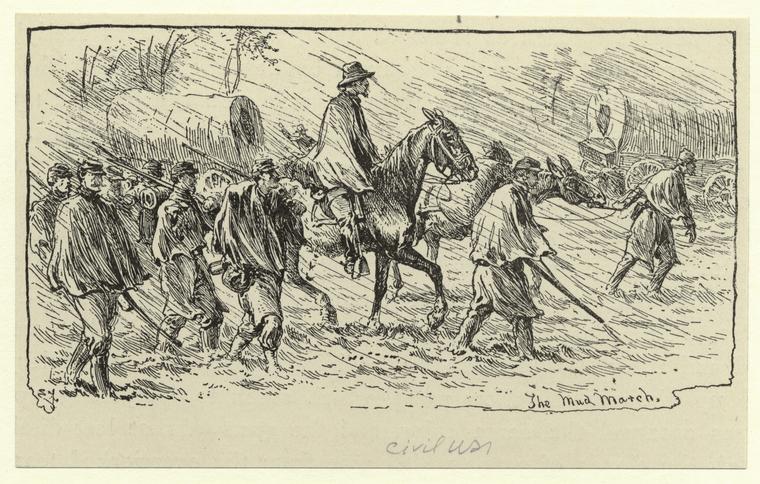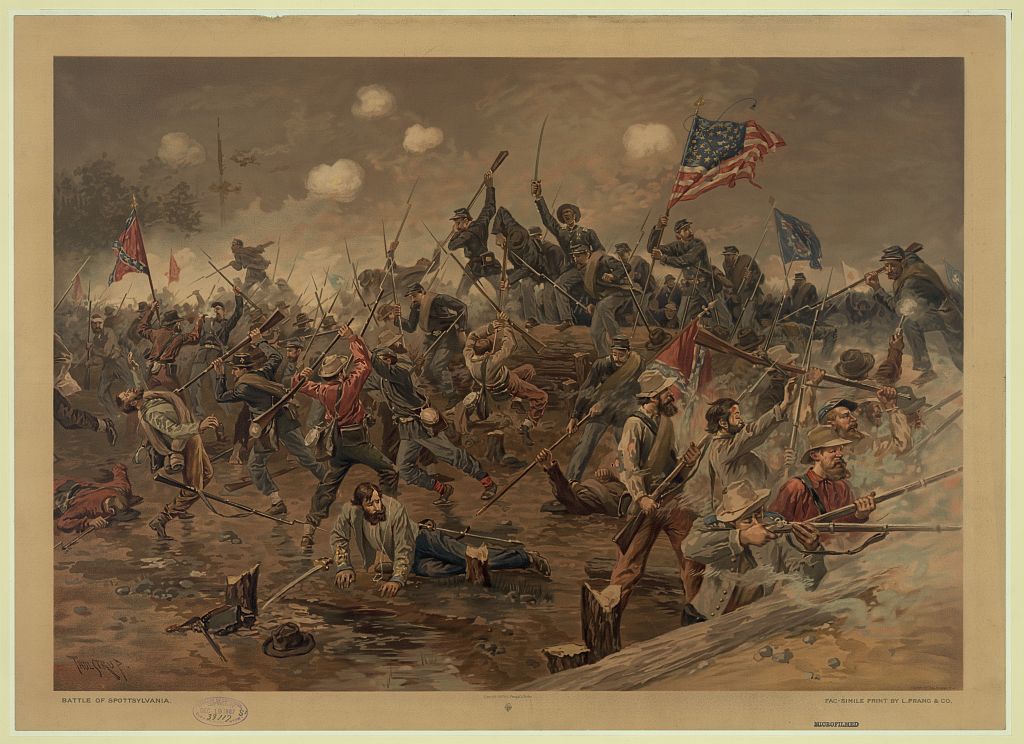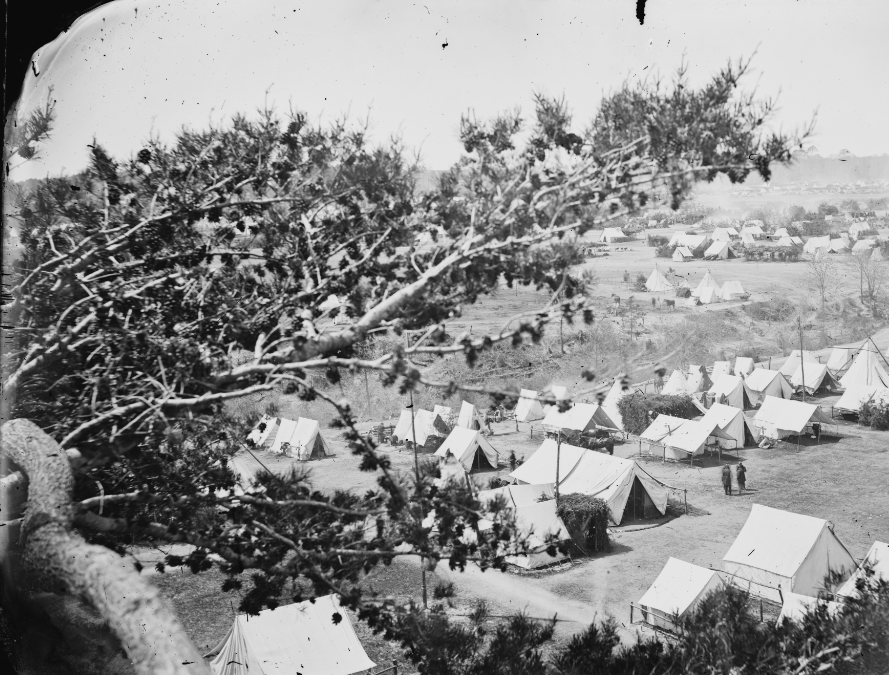By Cameron Boutin
This blog is by Dovetail Historian Cameron Boutin, who is sharing just some of his fascinating dissertation research on soldiers during the Civil War.
United States (U.S.) and Confederate soldiers in the Civil War experienced the pressures of weather in a variety of ways over the course of their military service. The weather was not simply a passive backdrop to their time in the army; it was a central preoccupation. While this could be said about most people in mid-nineteenth-century America, wartime service necessitated much longer lasting exposure to the elements then life at home. One of the things that sets the soldier’s encounters with the weather apart from others was that they essentially had no reprieve. They lived outside for years at a time. Who else in nineteenth-century American society lived outside continuously for years? The weather intersected with some of the most central experiences of soldiering, from tent camping and marching to performing sentry duty and fighting on the battlefield. Most men understood that enduring the vagaries of the weather was a necessary part of war, but most nevertheless believed that bad weather made life in the military much more difficult and disagreeable.
One of the most frequent sources of hardships for soldiers was wet and stormy weather. Men spent the majority of their service in encampments, living in different types of tents, ranging from large and fully enclosed models to smaller and lightweight ones such as the commonly used open-ended shelter tents (Figure 1). No matter the type of tent, inclement conditions usually exceeded their capacity to shield against the elements, particularly heavy rain. Water leaked through canvas roofs or flowed across the ground into tents, flooding the shelters with inches or even feet of water. Soldiers’ bodies and possessions became drenched, interfering with their ability to sleep and forcing them to live in a persistent state of wetness until the rain subsided. In December 1862, Pennsylvania Corporal Calvin S. Heller penned in his diary in Virginia: “It is not a very pleasant [sic] affair, to be roused from one’s slumber by a flood underneath and the pouring down of the wartery [sic] elements from above” (Heller 1862). The strong winds that could accompany storms caused still more problems. Tents were commonly blown down and collapsed onto the occupants, who had to extricate themselves from the wet canvas and were left exposed to the falling rain.
Men found themselves soaked when they had to march, occupy field fortifications, or fight in rainstorms, but a much greater problem was the wet weather’s impact on the terrain, turning the soil into gooey mud. The remarkably deep mud encountered by soldiers stemmed from the clayey soil composition of large portions of the South. Reflecting the thoughts of countless troops, Maine Private John Haley complained in June 1863 during the Gettysburg Campaign, “It commenced to rain in fine old Virginia style, and in less than an hour the road was a mass of liquid mud up to, even over, our ankles in many places” (Silliker 1985). With most of the roads in the South composed of dirt, marching men had to trudge through various depths of mud whenever it rained. Marching through mud was exhausting, and men struggled to maintain their footing, regularly slipping, sliding, and stumbling and even becoming stuck (Figure 2).

Figure 2: Federal troops moving through the rain and mud in Virginia during the infamous Mud March of January 1863 (Forbes 1863).
On the battlefield, muddy terrain made it challenging for troops to maneuver and engage the enemy, with the side on the offensive usually at the disadvantage because the nature of their operations required greater mobility than the side fighting on the defensive, which could remain more stationary. For example, at the Battle of Spotsylvania Court House in May 1864, a Mississippi private recalled: “Soon the Yanks made a determined charge with fixed bayonets, but the mud fought for us. Many of them were shot dead and sank down on the breastworks without pulling their feet out of the mud” (Cockrell and Ballard 1995). Besides the mud, wet weather could have a devastating effect on firearms, rendering them faulty or even inoperable in various military actions. In some engagements, pervasive wetness caused troops’ weapons to misfire, preventing them from offering serious resistance to their opponents. At Spotsylvania for instance, an attacking Federal force was able to overrun a salient in the enemy defensive line because many of the Confederates could not blunt the U.S. assault due to their rain-impaired muskets (Figure 3).

Figure 3: U.S. and Confederate soldiers fought for almost 24 hours amid stormy weather at Spotsylvania Court House, Virginia, on May 12, 1864 (Thulstrup 1887).
Facing such a wide range of problems, troops devised methods to combat wet weather, improvising and using any means available alleviate its difficulties. Some of these adaptions were simple. Men living in tents learned to dig small ditches around the perimeter of their shelters to prevent flooding, to securely stake their tents to withstand wind gusts, and to build makeshift beds using hay, brush, or other available materials to stay off the saturated ground. To make slogging through rain and mud easier, they learned to carry only the equipment that they considered the most essential for their survival. Others employed coping mechanisms to help mentally endure, such as swearing as an emotional release or distracting themselves through humor. Marching troops, for instance, made jokes and laughed in amusement as they watched comrades fall or get stuck in muddy roadways.
The material items typically issued to soldiers had a critical role in shaping their experiences with the weather. To these men, tents, uniforms, blankets, and other pieces of equipment were much more than just stuff. No matter the facet of wartime service, troops who possessed or had access to sufficient equipment often fared better when it came to adverse weather than those men who did not. In rainy conditions, soldiers hoped to possess the different types of waterproof blankets. Soldiers would lay on, cover their bodies with, or wrap the blankets around themselves while trying to sleep in camp, standing on guard duty, or marching through the rain (Gaede 2022). They were a versatile item that men never wanted to be without when the weather was bad. At a Mississippi camp in January 1863, Missouri (U.S.) Lieutenant Henry Kircher noted, “I wrapped myself in my rubber blanket and let it rain to its heart’s content without getting wet” (Hess 1983). Against the mud, there was no more important weapon than soldiers’ footwear. The standard shoe for infantrymen was ill-suited for rainy weather, allowing men’s feet to become soaked. Consequently, when storms raged and the ground became viscous mud, soldiers preferred to have high leather boots, which were much more water resistant. Infantrymen were not issued high boots and had to procure them on their own, with many writing home requesting that their families send them. No matter how they obtained boots, soldiers were appreciative for the protection and comfort they provided. After a muddy march in early 1863 in Virginia, New York Corporal John Hartwell contended, “I never had anything that did me more good or that I was more thankful for than those boots” (Britton and Reed 1997).
Through their struggles against rain as well as the heat and cold, Civil War soldiers generally became more successful at adjusting to the rigors of weather over the course of their service as they accumulated knowledge and experience across the varying terrain of the war. Adapting to the difficulties of weather helped men survive the conflict and turned out to be a critical element in how common soldiers became hardened veterans.
Figures
Figure 1: Rows of tents at a U.S. Army encampment in Virginia in May 1862 during the Peninsula Campaign (Library of Congress 1862).
Figure 2: Federal troops moving through the rain and mud in Virginia during the infamous Mud March of January 1863 (Forbes 1863).
Figure 3: U.S. and Confederate soldiers fought for almost 24 hours amid stormy weather at Spotsylvania Court House, Virginia, on May 12, 1864 (Thulstrup 1887).
References
Britton, Ann Hartwell, and Thomas J. Reed, editors.
1997 To My Beloved Wife and Boy at Home: The Letters and Diaries of Orderly Sergeant John F.L. Hartwell. Associated University Presses, London.
Cockrell, Thomas D., and Michael B. Ballard, editors.
1995 A Mississippi Rebel in the Army of Northern Virginia: The Civil War Memoirs of Private David Holt. Louisiana State University Press, Baton Rouge.
Forbes, Edwin
1863 The Mud March. New York Public Library, Wallach Division Picture Collection, New York. Electronic document, https://digitalcollections.nypl.org/items/510d47e0-e7e4-a3d9-e040-e00a18064a99, accessed May 2024.
Gaege, Frederick C.
2022 Ponchos and Waterproof Blankets During the Civil War. Military Images 40, no. 2. Pp. 70–74.
Heller, Calvin S.
1862 Calvin S. Heller Diary. Civil War Document Collection, U.S. Army Heritage and Education Center, Carlisle, Pennsylvania.
Hess, Earl J., editor.
1983 A German in the Yankee Fatherland: The Civil War Letters of Henry A. Kircher. Kent State University Press, Kent, Ohio.
Library of Congress
1862 Cumberland Landing, Va. Federal encampment; view from tree. Library of Congress, Geography and Maps Division, Washington, D.C. Electronic document, https://www.loc.gov/item/2018666158/, accessed May 2024.
Silliker, Ruth L., editor.
1985 The Rebel Yell & the Yankee Hurrah: The Civil War Journal of a Maine Volunteer. Down East Books, Lanham, Maryland.
Thulstrup, Thure De
1887 Battle of Spottsylvania [sic]. Library of Congress, Geography and Maps Division, Washington, D.C. Electronic document, https://www.loc.gov/pictures/item/90712278/, accessed May 2024.

